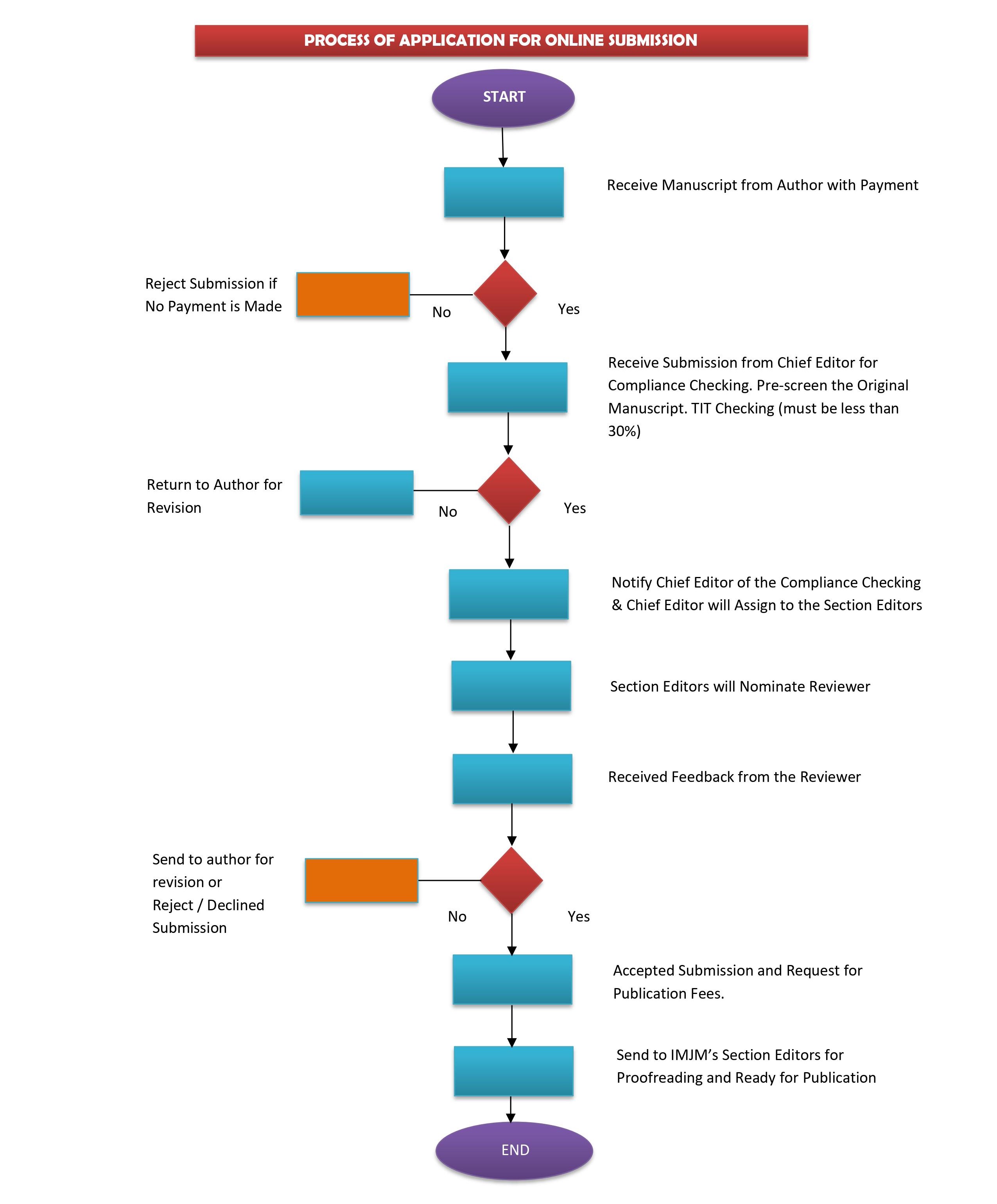About
Aim and scopes
Editorial Team
International advisory committee
The Review Process
Peer-review policy
IMJM follow a strict peer-review policy to ensure the manuscript is of highest standard before it is published. The reviewers are chosen based on the similar research interest to the submitted manuscripts, to provide feedback on the articles originality, validity and significance to help editors determine whether the manuscript should be published in our journal.
IMJM practises a double-blind review system from at least two reviewers, to provide the highest level of academic credibility.
Overall editorial responsibility for the journal is with the Chief Editor. Section Editors manages the progression of manuscripts submitted to their section from submission to publication by communicating with authors and peer reviewers regarding article reviews and revisions. The section editors often have the final decision whether a submission is accepted or rejected.

1. Submission of Paper
All submissions to IMJM is online via. our online system. The corresponding author can log onto https://journals.iium.edu.my/kom/index.php/imjm and follow the instructions to the author section.
2. Appraisal by the Chief Editor (CE)
The Chief Editor checks that the paper is appropriate for the journal and conforms to the aims and scope of the journal. It should be sufficiently original and interesting. The Chief Editor may rejected the paper without being reviewed any further if deemed inappropriate.
3. Editorial Secretariat Assessment
The Chief Editor forwards the manuscript to the editorial secretariat staff. They will pre-screen to check for compliance with the ‘Guidelines to the authors’. This process also includes Turnitin originality checking (must be less than 30% similarity).
4. Review process initiated by CE or assigns a Section Editor (SE)
The Chief Editor himself/herself will nominate a reviewer or assign the task to one of the five section editors in the panel.
5. Invitation to Reviewers
The assigned editor (handling editor) will request reviewers whom he or she believes would be appropriate for the subject matter of the manuscript. The selection of reviewers could be from our database of reviewers or invitation will be extended to new reviewers. The whole process is double-blinded but the author has access to the progress of their manuscript’s review process via our online system.
6. Response to Invitations
Potential reviewers are selected based on their own expertise, conflicts of interest and availability. They can either accept or decline. When declining, they may be requested to suggest alternative reviewers.
7. Review is Conducted
The reviewer is provided four weeks for their initial review and comments. The reviewer may feel comfortable rejecting the paper without further work. Once a full review is conducted, they are at liberty to make comments in the article itself or provide feedback directed to the author via the online system. They can also provide comments that are privy to the editor only. The review is then sent back to the journal, with a recommendation to accept or reject it – or else with a request for revision (usually flagged as either major or minor) before it is reconsidered.
8. Evaluation of the Reviews
The editor will evaluate the reviewers comments before making an overall decision. The editor may invite an additional reviewer so as to get an extra opinion before making a decision if deemed necessary.
9. Communication of the decision
The editor sends a decision email to the author including any relevant reviewer comments. The comments are anonymous
10. Articles needing revisions or rejected:
If the article is rejected or sent back for either major or minor revision, the editor usually include the comments from the reviewers to help the author improve the article.
The reviewer is informed via an email thanking them for the review and apprising them about the outcome of their review. If the manuscript was sent back for revision, the same reviewers will be requested to evaluate the it again, unless they decline to do so.
A request for minor changes is usually attended to by the handling editor following response by author.
11. Accepted articles:
If accepted, the editor will inform the author to settle the publishing fee. Once payment is made, the manuscript is sent for proof reading. This is currently conducted by the editorial board members. Once complete the paper is sent back to the author for final appraisal. Following the authors acceptance, the paper is sent for production.





